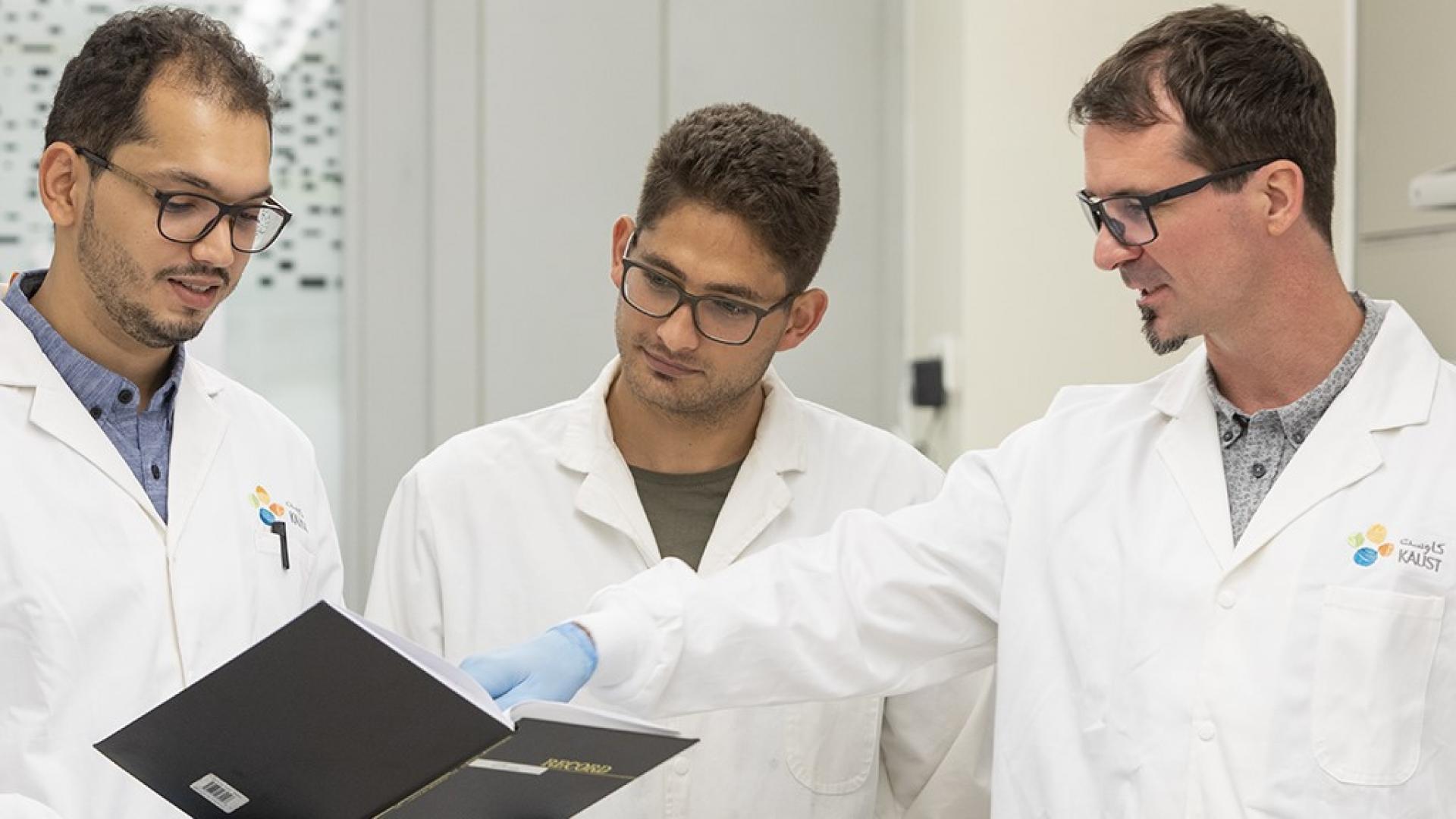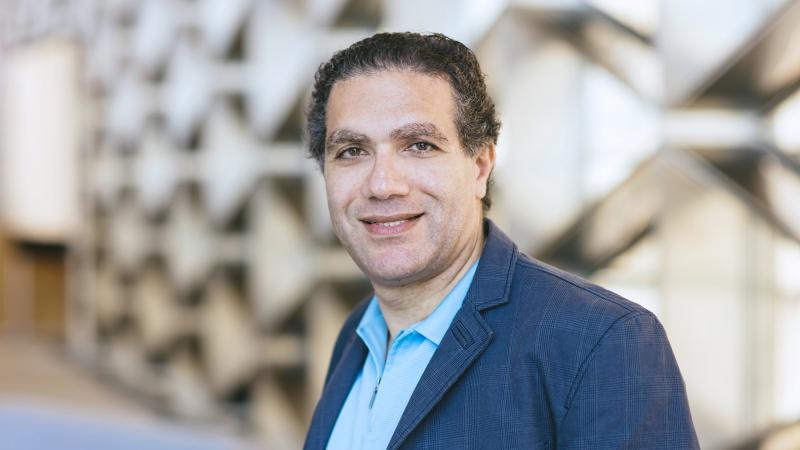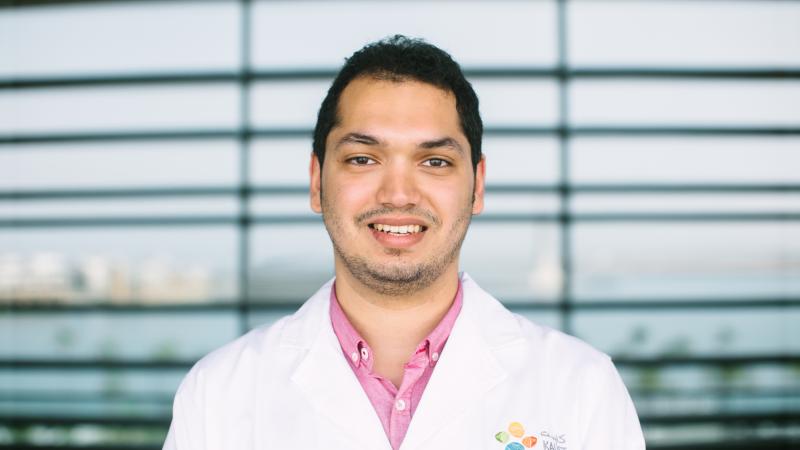© 2019 KAUST
By David Murphy
Imagine if there was a revolutionary wearable technology that could enable the user to open doors or operate machinery with a simple wave of their hand or a mere blink of their eye? What people might not realize is that this contact-free human-machine technology already exists—and it has been developed right here in a laboratory at KAUST.
Over the past few years, Abdullah Almansouri, a KAUST Ph.D. student supervised by Associate Professor Jürgen Kosel in the Sensing, Magnetism and Microsystems (SMM) research group and Professor Khaled Salama in the Sensors Lab research group, has developed a technology that could revolutionize how we interact with the world around us.
The electrical engineering student and his SMM colleagues have been busy creating a stretchable, ultra-flexible, wearable, and biocompatible composite magnet, or a “magnetic skin.” The KAUST-developed technology acts as a highly flexible sensor with the ability to measure vibration, touch, and movement. The skin can assist people with disabilities, paralysis, and degenerative diseases to regain lost mobility and to better interact with their surroundings.
“It is a novel technology with many promising features. Our research offers the potential for improving the quality of life of many people,” Almansouri noted. “For example, it can be operated through facial expressions and offers people with quadriplegia increased mobility to live more independently; to move around and manipulate their environment with ease,” he added.
A promising technology
Compared to other artificial skins that require sophisticated electronics and microfabrication, the SMM-developed magnetic skin is quite straightforward in its design. It is created by mixing the elastomer matrix with magnetic powder and drying the mixture at room temperature. Following this stage, the material is then magnetized depending on the intended application before a magnetic sensor is added to complete the manufacturing process.
“So far, we have discovered the material of the magnetic skin and some potential applications, yet, we believe this is just the tip of the iceberg. The skin is a simple yet practical solution for wearable electronics, and we are exploring many potential applications in the field of wearable biomedical tattoos.”
The subtle wireless properties of Almansouri’s magnetic skin—which can be placed on the hand, fingers, or eyelids—means that it does not require cumbersome batteries, wires, antennas, or electrics of any kind. Along with its ability to be programmed to analyze sleep patterns and monitor eye conditions, the skin can also be customized to take any color or shape or be worn invisibly.
“We have already demonstrated many applications for the magnetic skin, including, tracking sleep quality and the eye movement, which is of interest in sleep laboratories. Additionally, it can be used as magnetic hands for virtual and augmented reality applications, or magnetic gloves for contact-free switching and control in sterile environments, such as laboratories and operating theaters.”
Unprecedented in-Kingdom media attention
Outside of traditional coverage in scientific publication channels, the electrical engineering student’s innovative research has garnered particular attention from in-Kingdom media. His research has received widespread coverage on TV channels, such as Rotana and SBC (Link), news websites Sabq and Alyaum; and on social media accounts of prominent Saudi influencers, such as Moayed Althagafi.
“It is a great feeling to know that many audiences are interested in hearing about my recent work. In my opinion, this is a significant sign that my research is important and that I am on the right track,” Almansouri noted.
“We believe that our research can be of benefit to Saudi Arabia and possesses the potential to improve the quality of life of Saudi citizens. Eventually, we see this technology as a fully-realized Saudi-founded startup, with applications in different fields and utilized around the world, which is in perfect alignment with Saudi Vision 2030.”
Helping to realize unheralded solutions
As a researcher, KAUST has provided Almansouri with the tools, facilities, and support to realize his goal of producing a pioneering technology capable of revolutionizing people’s lives. From idea to prototype to possible startup, KAUST has played its part in helping this young Saudi researcher fulfill his dream to create a better tomorrow.
“Having the chance to conduct research at KAUST is great because they removed the burdens on me and enabled me to focus on my research. The support I have received from my KAUST supervisors, fellow researchers, etc. from the magnetic skin’s “birth” to realizing a prototype, and hopefully one day to create a business model and a startup has been exceptional.
“It is a marvelous feeling when you identify a solution that no-one else saw before, and you know this solution has incredible potential for helping people in need to live a better life. I cannot contain my excitement at the thoughts of advancing my work from its current stage to a ready-to-market product.”


